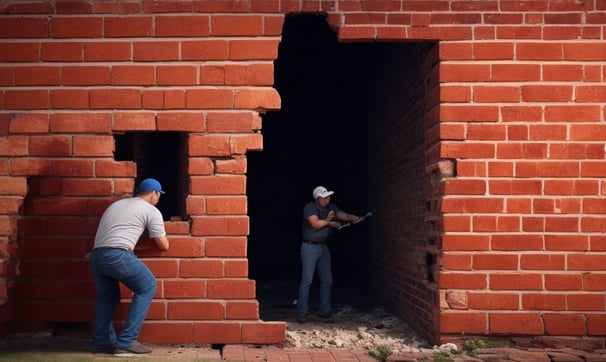Brick by Brick: Can You Glue a Brick Back onto a Wall?
GLUE COMPATIBILITY


This blog post discusses the feasibility of gluing a loose brick back onto a wall, outlining the assessment process, adhesive selection, and important considerations for a successful and lasting repair.
Brick by Brick: Can You Glue a Brick Back onto a Wall?
The sight of a loose or fallen brick on your wall can be a cause for concern. Can you simply glue it back into place, or is a more complex repair needed? In this blog post, we dive into the factors to consider when attempting to glue a brick back onto a wall and whether this approach is a viable solution.
Assessing the Situation:
Before reaching for the adhesive, it's essential to assess the condition of the brick, the wall, and the surrounding area. Here are the steps to consider:
Examine the Brick: Check the brick for damage. If it's cracked, chipped, or extensively worn, gluing it may not provide a secure and lasting fix.
Inspect the Wall: Examine the wall to ensure it's structurally sound. If the wall is deteriorating or if multiple bricks are loose or damaged, a more comprehensive repair may be necessary.
Clean and Prepare: Clean both the brick and the area on the wall where it will be reattached. Removing dirt, debris, and loose mortar is crucial for a strong bond.
Choosing the Right Adhesive:
Selecting the appropriate adhesive is a critical step in this process. For bonding bricks to a wall, construction adhesive or masonry adhesive is typically recommended. These adhesives are designed to withstand the weight and environmental conditions that bricks face.
Applying the Adhesive:
Follow these general steps for applying adhesive and reattaching the brick:
Apply Adhesive: Apply a generous amount of construction or masonry adhesive to the back of the brick and along the area of the wall where the brick will be placed.
Press the Brick: Carefully press the brick into its original position on the wall, making sure it aligns correctly with adjacent bricks.
Support and Cure: Use temporary supports or braces to hold the brick in place while the adhesive cures. Follow the adhesive manufacturer's instructions for curing time.
Factors to Consider:
Weather and Temperature: Adhesive performance can be affected by temperature and weather conditions. Ensure that you apply adhesive within the recommended temperature range and consider weather protection during the curing process.
Weight and Load: Consider the load-bearing capacity of the adhesive and the brick's weight. Some adhesives are better suited for heavier loads than others.
Future Maintenance: Keep in mind that glued bricks may not be as easily replaceable as traditionally mortared bricks. Consider the long-term implications of this repair.
Consult a Professional:
If you have any doubts about your ability to execute this repair successfully or if you suspect structural issues with the wall, it's advisable to consult a professional mason or contractor. They can assess the situation, recommend the best course of action, and ensure a safe and lasting repair.
Conclusion: Brick by Brick, with Care:
While gluing a loose brick back onto a wall can be a viable solution in some cases, it's essential to evaluate the condition of the brick, the wall, and the adhesive you plan to use. When executed correctly and under the right circumstances, this repair method can provide a reliable fix. However, when in doubt, seeking professional guidance ensures that your wall remains secure and stable for years to come.
